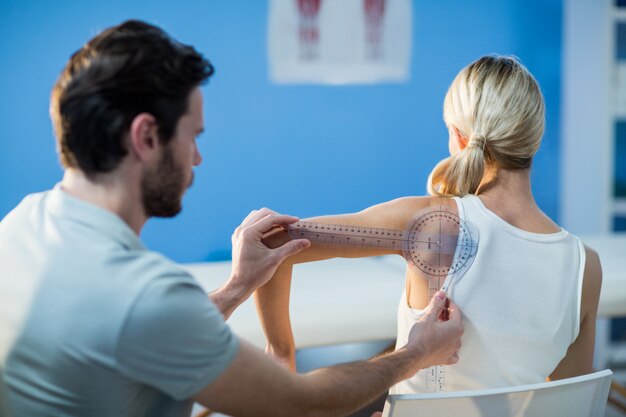How to Know If You Have Scoliosis: Recognizing Signs and Taking Action
Imagine standing in front of a mirror, noticing for the first time that one shoulder is slightly higher than the other. You might shrug it off, but what if it's a sign of something more? Scoliosis, an abnormal curvature of the spine, often sneaks up on individuals without obvious warning. Understanding the early signs and knowing when to seek professional insight are crucial steps in addressing this condition. Here’s what you need to know to determine if you're experiencing scoliosis and what you might consider next.
Understanding Scoliosis: What Is It?
Scoliosis refers to an unusual sideways curvature of the spine, appearing in an 'S' or 'C' shape. Typically detected in childhood or adolescence, scoliosis can vary significantly from mild to severe. It is crucial to understand that scoliosis doesn’t always indicate underlying health conditions but requires attention to prevent potential complications.
Types of Scoliosis
- Idiopathic Scoliosis: Most common; the cause is unknown.
- Congenital Scoliosis: Caused by a spinal defect present at birth.
- Neuromuscular Scoliosis: Associated with neurological conditions such as cerebral palsy or muscular dystrophy.
- Degenerative Scoliosis: Occurs in adults due to arthritis or osteoporosis.
Recognizing the Signs of Scoliosis
Detecting scoliosis early can significantly affect management and outcomes. Here's what to look for:
Physical Symptoms
- Uneven Shoulders: One shoulder blade is more prominent or positioned higher than the other.
- Asymmetrical Waist: A difference in the space between your arms and the waist when standing upright.
- Prominent Rib Cage: One side of the rib cage juts out more than the other.
- Hip Alignment: One hip appearing higher or more pronounced.
- Leaning to One Side: The tendency to lean to one side could indicate an imbalance.
Less Obvious Indicators
- Back Pain: While not always present in those with scoliosis, back discomfort can occur, especially in adults.
- Breathing Difficulties: Severe curves might impact lung function and breathing capacity.
- Clothing Doesn’t Fit Right: Clothes hang unevenly or seems to twist around the body.
Emotional and Social Signs
- Decreased Confidence: Body changes can affect self-esteem, particularly in teenagers.
- Social Withdrawal: Avoiding activities due to appearance concerns.
Diagnosing Scoliosis: What Happens Next?
If you suspect scoliosis, medical evaluation is the next step. Here's how the diagnosis unfolds:
Initial Consultation
A healthcare provider will conduct a physical examination. They may ask you to bend forward in the "Adams Forward Bend Test" to check for unevenness or asymmetry.
Imaging Tests
- X-rays: The primary tool for confirming scoliosis, showing the curvature extent and location.
- MRI/CT Scans: These may be necessary if there's concern about underlying causes.
The Cobb Angle
Doctors measure the curve using the Cobb angle. This metric helps determine the severity, categorized as:
- Mild (10-20 degrees)
- Moderate (20-40 degrees)
- Severe (Over 40 degrees)
Approaching Scoliosis: What Are Your Options?
Discovering scoliosis isn't about panic but understanding available options. Here’s how you might navigate this journey:
Monitoring and Regular Check-Ups
For mild cases, regular monitoring may be all that's required. Periodic check-ups ensure the curvature hasn’t progressed significantly.
Bracing
Most common in adolescents with moderate scoliosis, braces can prevent further curvature progression during growth periods. They're custom-made and typically worn until bone growth completion.
Surgical Intervention
For severe cases or those impacting daily living, surgery might be considered. Procedures, such as spinal fusion, correct curvature and stabilize the spine.
Lifestyle and Support
Physical activity is often encouraged to maintain overall health and flexibility. Support groups and counseling can offer emotional backing and a platform to share experiences.
Exploring Non-Surgical Methods
Non-surgical treatments, like physical therapy, chiropractic care, and specialized exercises, may complement traditional approaches. However, the focus remains on managing symptoms and improving quality of life rather than correcting the spinal curve.
Scoliosis in Specific Groups: Unique Considerations
Children and Adolescents
Early detection is crucial here. Screenings are often performed in schools, aiming to identify and manage scoliosis during rapid growth phases effectively.
Older Adults
Degenerative scoliosis emerges as discs and joints wear down. Awareness of symptoms can promote earlier intervention and reduce the risk of complications, such as chronic pain or decreased mobility.
Athletes
Engaging in sports often raises concerns for individuals with scoliosis. Most with mild scoliosis can participate fully, but activities impacting the spine significantly might require tailored advice from healthcare professionals.
Moving Forward with Confidence
Detecting scoliosis hinges on awareness and understanding rather than fear. By recognizing potential signs early and seeking appropriate advice, you can navigate the next steps effectively. Whether it means regular monitoring, exploring treatment options, or simply gaining peace of mind, knowledge empowers you to make informed decisions.
Steps to Empowerment
Remember that scoliosis isn’t just about curved spines; it’s about individuals’ lives and experiences:
- Stay Informed: Keeping up with scoliosis information helps you stay proactive.
- Establish a Support System: Whether friends, family, or online communities, support can uplift you emotionally.
- Be Your Advocate: Speak up in healthcare settings; your insights are crucial in your scoliosis journey.
Finally, embrace the body and the journey. Scoliosis may pose challenges, but it does not define you. With the right information and support, living a fulfilling and active life is entirely possible.
Scoliosis Insights: Quick Takeaways
- 🔍 Monitoring is Key: Regular check-ups ensure early detection and management.
- 🙋♂️ Recognize Symptoms Early: Keep an eye out for uneven shoulders, asymmetrical waists, and clothing fitting awkwardly.
- 🏥 Consult Professionals: Seek medical evaluations promptly for suspected cases.
- 💪 Consider Non-Surgical Supports: Physical therapy and braces help manage progression.
- 📚 Stay Educated and Empowered: Awareness leads to better management and outcomes.
Navigate your scoliosis journey with confidence and the knowledge that help and support are within reach.
